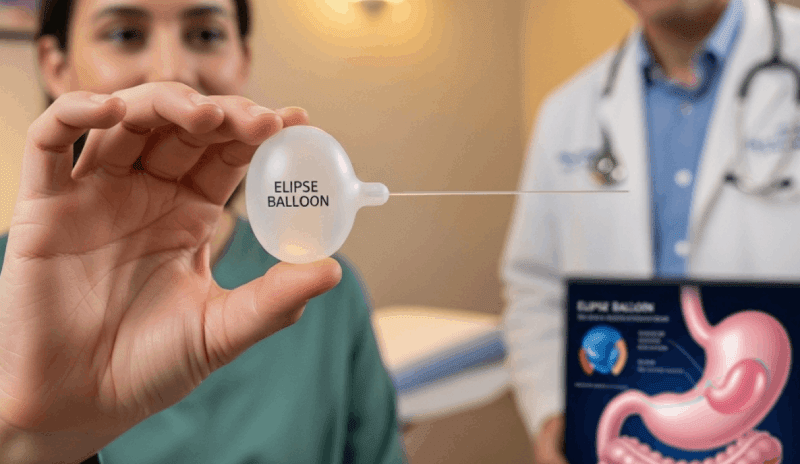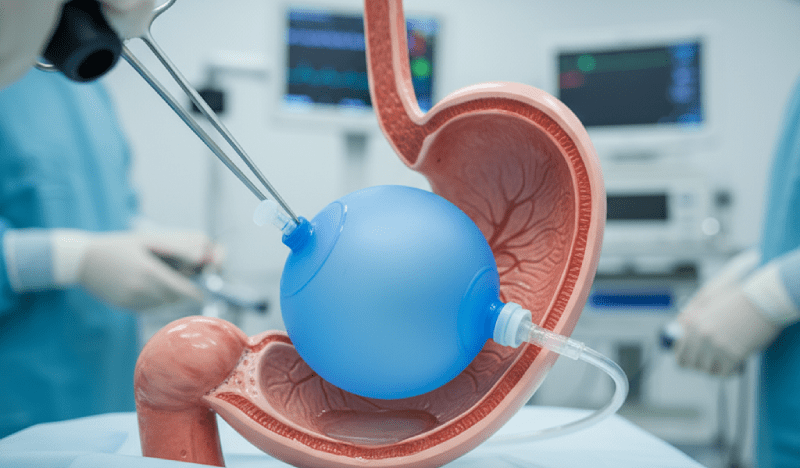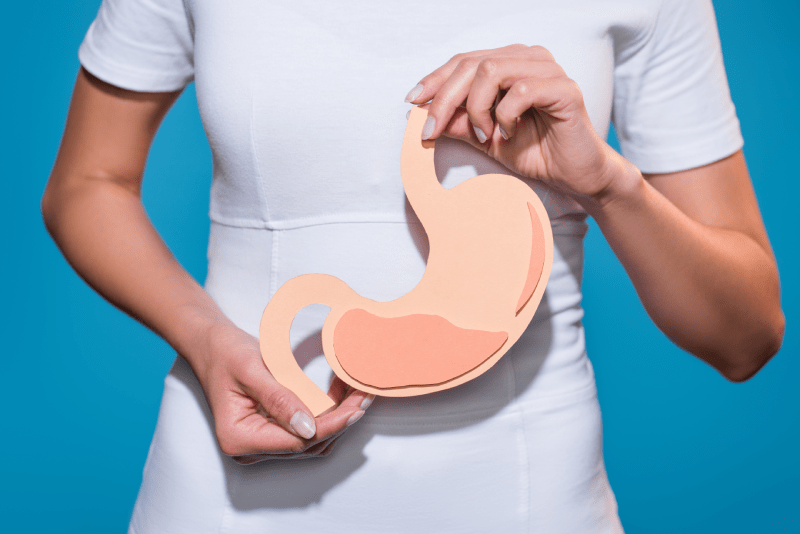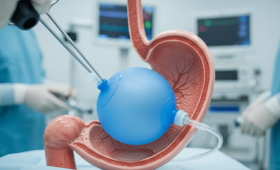What Are Gum Diseases And How Do They Start?
Gum diseases usually begin with bacterial plaque accumulation on the teeth due to inadequate oral hygiene. Gingivitis, the initial stage, is characterized by redness, swelling, and bleeding of the gums and is completely reversible with early diagnosis. If left untreated, this condition progresses to Periodontitis. Periodontitis is a much more serious infection that can lead to tooth loss by destroying the bone and tissues supporting the teeth. Regular check-ups and professional cleaning are vital to prevent this progression, ensuring the health of the supporting structures around your teeth and avoiding severe complications later on.
What Are The Main Symptoms Of Gum Diseases?
The most common and initial symptom of gum diseases is gum bleeding when brushing or flossing. Other important symptoms include redness, swelling, and sensitivity in the gums. In advanced stages, symptoms like persistent bad breath (halitosis), gums receding from the teeth (gum recession), accumulation of pus between the tooth and gums, and loose or shifting teeth may begin to appear. If any of these symptoms are noticed, it is necessary to consult a periodontology specialist to prevent more serious problems and receive timely, effective treatment.
Why Should Istanbul Be Preferred For Gum Diseases Treatment?
Istanbul boasts numerous modern clinics that offer world-standard services in periodontology and aesthetic dentistry. Specialists in the city use up-to-date treatment protocols and advanced technologies like lasers to achieve fast, painless, and successful results. Offering the same quality of service at more competitive prices compared to centers in Western Europe and America makes Istanbul an attractive hub for international health tourism. Furthermore, you get the opportunity to combine your treatment process with a trip exploring the city’s historical and cultural richness.
How Is Gingivitis (Gum Inflammation) Treated?
Gingivitis is the mildest and most reversible stage of gum disease. Its treatment usually begins with a professional dental cleaning performed by a dentist. During this procedure, all plaque and tartar (calculus) deposits on the teeth and immediately below the gum line are meticulously removed. Another important part of the treatment is educating the patient on proper oral hygiene techniques (correct brushing, flossing, and interdental brush use). With regular and correct care, the inflammation subsides within a few days, and the gums return to their healthy pink color.
What Is The Treatment For Periodontitis (Advanced Gum Disease)?
The treatment for Periodontitis, which is advanced gum disease, varies according to the severity of the disease. For early-stage periodontitis, deep cleaning (curettage) and root surface scaling and planing procedures are applied. These treatments aim to eliminate tartar and infection within the gum pockets. In advanced cases, gum surgery (flap operation) may be necessary. These surgeries lift the gums, allowing for deep cleaning of the root surfaces and repair of damaged bone. Treatment is crucial to halt the disease’s progression and save the teeth from potential loss.
How Are Gum Treatment Costs Determined In Istanbul?
Gum treatment costs in Istanbul are largely determined by the stage and severity of the disease, the treatment method applied (laser, surgery, graft), the necessary number of sessions, and the general quality standards of the center. While simple dental cleaning and gingivitis treatment are affordable, surgical procedures required for advanced periodontitis or gum recession can be more costly. Package prices including accommodation and transfers, arranged through intermediaries like Cure Holiday, can be more advantageous for international patients.
Which Specialization Should Be Consulted For Gum Treatment?
For the diagnosis and treatment of gum diseases, one must consult a Periodontology specialist. Periodontists are dentists who have received specialized training in the prevention, diagnosis, and treatment of diseases affecting the supporting tissues surrounding the teeth and the gums. In complex cases such as gum recession, advanced bone loss, and aesthetic gum adjustments, only this specialty can provide the most appropriate and long-lasting solutions, ensuring the highest level of care and expertise.
What Technological Methods Are Used In Gum Treatment?
Modern dental centers in Istanbul utilize advanced technological methods to enhance the comfort and effectiveness of gum treatments. Prominent among these are Laser (Soft Tissue Laser) treatments, which offer less bleeding and faster healing compared to conventional surgery. Additionally, ultrasonic devices for precise and deep cleaning, and 3D tomography (CBCT) imaging technologies for surgical planning are widely used. These technologies make treatment processes more comfortable and predictable for the patient.

How Is Laser Gum Treatment Applied And What Are Its Advantages?
Laser gum treatment is a minimally invasive method used to relieve gum inflammation and infection in the pockets. The laser beam targets infected tissue and bacterial accumulations, providing sterilization without harming healthy tissue. The major advantages of this method include less pain, minimal bleeding, no need for sutures, and a much faster recovery period compared to traditional surgery. The laser stands out as a comfortable alternative for patients with a fear of surgical procedures.
Is Pain Felt During Gum Treatment?
During gum treatments, local anesthesia is frequently applied to ensure patient comfort, so no pain or discomfort is felt during the procedure. Anesthesia is mandatory, especially for deep cleaning or surgical interventions. After the procedure, when the effect of anesthesia wears off, a slight sensitivity or ache may be felt, but this is usually easily managed with standard painkillers prescribed by the doctor. Sedation options are also available for highly anxious patients to ensure a completely relaxed experience.
Which Methods Are Applied For Gum Recession Treatment?
Treatment for gum recession (Recession) usually aims to cover the tooth’s root surface and restore aesthetics. The most common method is gum grafting (tissue transplant) procedures. In these procedures, healthy tissue taken from the patient’s palate or a special tissue bank is transferred to the area of recession. Additionally, the Pinhole Surgical Technique, a minimally invasive method, may be applied in some cases. The treatment both eliminates tooth sensitivity and protects the teeth against further bone loss.
How Long Does The Recovery Period Take After Gum Treatment?
The recovery period after gum treatment varies greatly depending on the method applied. Gums typically recover within a few days after simple dental cleaning. Sensitivity after deep cleaning (curettage) usually lasts about one week. If a surgical procedure (flap operation or grafting) was performed, the initial swelling and sensitivity may take 7 to 14 days to subside. Complete tissue healing and graft take can take several months. Adhering to the doctor’s hygiene and nutrition instructions during this process is crucial.
How Is Gum Surgery (Flap Operation) Performed?
The flap operation is a surgical treatment applied in advanced Periodontitis cases. This procedure is performed under local anesthesia and involves gently opening the gum with special tools (lifting a flap) to allow access to the tooth root surfaces and bone underneath. The specialist cleans the deep tartar and infected tissues from the root surfaces, straightens damaged bone, or repairs it with bone grafts. Once the procedure is complete, the gum is secured back in place with sutures. This operation is critical to minimize the risk of tooth loss.
Are Gum Diseases Related To Other Diseases In The Body?
Yes, gum diseases (Periodontitis) have a strong relationship with systemic health. Inflammation and bacteria in the mouth can enter the bloodstream and spread to other parts of the body. This situation can particularly complicate diabetes control and increase the risk of cardiovascular diseases (heart attack, stroke). Furthermore, gum inflammation is known to be linked to preterm birth risk. Therefore, maintaining gum health is a vital part of maintaining overall body health and well-being.
Can Patients With Gum Disease Undergo Implant Treatment?
Patients with gum disease must ensure that their gum diseases are completely treated before undergoing implant treatment. Implants placed in the presence of active infection or uncontrolled periodontitis carry a significant risk and can lead to the development of Peri-implantitis (gum disease around the implant). For successful implant treatment, it is mandatory to first stabilize the health of the gums and bone, and then proceed to implant surgery.
What Antibiotics Are Used In Gum Treatment?
Antibiotics in gum treatment are generally used systemically (orally) to control the risk of infection before or after surgical procedures. In some cases, local antibiotic gels applied directly into the gum pocket may be used. These local applications ensure that a high dose of the medication reaches the infection site directly. The use of antibiotics is always determined according to the type and extent of the disease, under the prescription and supervision of a periodontology specialist.
What Are The Best Ways To Prevent Gum Diseases?
The most effective way to prevent gum diseases is to maintain meticulous and regular oral hygiene. This means brushing the teeth correctly with fluoride toothpaste at least twice a day and regularly using dental floss or an interdental brush every day. Additionally, visiting the dentist regularly twice a year and having professional dental cleaning plays a critical role in preventing plaque and tartar buildup. Proper nutrition and avoiding smoking are also important parts of preventive measures.

Are There Aesthetic Applications In Gum Treatment?
Yes, gum treatment (Periodontology) not only treats diseases but also offers aesthetic improvements. Procedures like Gingivectomy and Gingivoplasty reshape the gums in cases where the gums are excessively visible (gummy smile) or look asymmetrical, making the teeth appear longer and more aesthetic. These aesthetic adjustments are an integral part of smile design procedures and help create an attractive smile that is harmonious with the overall facial aesthetics.
How Is Gum Aesthetics (Gummy Smile) Corrected?
Gummy Smile (Gingival smile) is when the gums are overly visible when smiling. This condition can be corrected with various aesthetic procedures. Among the most commonly applied methods are contouring the gums with laser or surgery (gingivectomy/gingivoplasty). In more severe cases, lip repositioning surgery or Botox application may also be used to prevent the lips from lifting too high. The treatment plan is personalized by the dentist based on the underlying cause, aiming for an aesthetic balance.
Are The Results Of Gum Diseases Treatment Permanent?
The results of gum diseases treatment largely depend on the patient’s commitment to maintaining oral hygiene. The deep cleaning, surgical repair, and grafting procedures performed stop the disease’s progression and repair the damage, but for these results to be permanent, the patient must not neglect brushing and flossing. Furthermore, regular professional maintenance and check-ups at intervals determined by the specialist (usually every 3-6 months) play a vital role in preventing the disease from recurring.
How Is Gum Inflammation Seen During Pregnancy Treated?
Pregnancy can make gums more sensitive due to hormonal changes, causing inflammation known as Pregnancy Gingivitis. The treatment for this condition is generally done with non-surgical professional dental cleaning. Antiseptic mouthwashes without antibiotics may be recommended to reduce pain and swelling. The treatment is extremely safe and important for the health of both the mother and the baby; symptoms can be controlled with gentle cleaning applied by the dentist.
Can Gum Diseases Be Seen In Children?
Although gum diseases are less common in children than in adults, Gingivitis is frequently seen and is usually related to inadequate brushing and consumption of sugary foods. Rarely, more severe forms such as juvenile periodontitis may also occur due to genetic factors or systemic health problems. If bleeding, redness, or swelling is noticed on a child’s gums, it is important to consult a specialist for early intervention.
Why Is Gum Treatment More Important For Diabetic Patients?
There is a two-way relationship between gum diseases and diabetes. Diabetes increases susceptibility to gum infections and slows down the healing process. Uncontrolled diabetes increases the severity of gum disease, while serious gum infections also make blood sugar control difficult. Therefore, it is critical for diabetic patients to undergo gum treatment and pay attention to regular care, both to maintain their oral health and their overall metabolic control.
What Happens If Gum Recession Is Not Treated?
Untreated gum recession causes the root surfaces of the teeth to become exposed, which leads to severe tooth sensitivity. Since the exposed root surfaces are not protected by enamel, they become more vulnerable to decay. Most importantly, if the underlying bone loss of the gum recession progresses, the supporting structure of the tooth weakens, potentially leading to tooth loosening and permanent tooth loss. Therefore, treatment planning should be done without delay when recession is noticed.
Does Tartar Removal Harm The Gums?
No, tartar removal, when performed by a periodontology specialist using correct techniques and equipment, absolutely does not harm the gums; on the contrary, it is a mandatory procedure to protect gum health. Tartar is the main source of gum inflammation and periodontitis. Professional cleaning eliminates these harmful deposits, allowing the gums to recover from inflammation and the tissues surrounding the tooth to regain their health.
What Should Nutrition Be Like After Gum Treatment?
After gum treatment, especially after surgery or deep cleaning, it is recommended to consume soft and warm foods for the first few days. Very hot, spicy, acidic, and hard foods should be strictly avoided. Such foods can irritate the sensitive gums and slow down healing. Foods that do not require chewing, such as soups, purees, yogurt, and ice cream, are ideal during this period. Furthermore, adequate water intake and a vitamin-rich diet are important to support healing.
What Should Be Considered After Gum Surgery?
Adhering to the doctor’s instructions is essential for fast and successful healing after gum surgery. Spitting and using a straw should be avoided within the first 24 hours after surgery, and the area should not be touched. Smoking and alcohol consumption must be strictly prohibited. Prescribed antibiotics and painkillers should be used regularly, and ice should be applied externally during the first day to reduce swelling. Additionally, heavy exercise and sports should be avoided for the first week.
What Are The Tissue Grafts Used In Gum Treatment?
The tissue grafts used in gum recession treatment are generally divided into connective tissue grafts and free gingival grafts. Connective tissue grafts are performed by taking connective tissue from under the patient’s palate and placing it in the recession area, and they offer excellent aesthetic results. Free gingival grafts use a piece of tissue taken directly from the palate. Additionally, allografts, which are commercially available and do not require tissue to be taken from the patient, may also be used in some cases.

Why Is Smoking Prohibited During The Gum Treatment Process?
Smoking is strictly prohibited during the gum treatment process because it severely slows down healing and reduces the success of the treatment. Nicotine in cigarettes constricts blood vessels (vasoconstriction), reducing blood flow to the gum tissue. This prevents the necessary oxygen and nutrients for tissue repair and infection fighting from reaching the area. Smoking after surgery can particularly reduce the chances of graft survival to zero.
Is There An Age Limit For Gum Diseases Treatment?
There is no fundamental age limit for gum diseases treatment. Periodontal problems can begin even in adolescence and require treatment. Gum treatment is vital in older patients as well to prevent tooth loss and improve quality of life. However, treatment planning in older patients should be done more carefully and meticulously due to their general health status, medications they use, and bone density.
What Are The Touristic Advantages Of Getting Gum Treatment In Istanbul?
Getting gum treatment in Istanbul offers the opportunity to combine health and culture. During your resting period before and after the treatment, you can explore the historical peninsula, the Bosphorus, and modern art galleries. Since your treatment package with Cure Holiday also covers transfer and accommodation services, all logistical details are taken care of. Thus, you can focus only on your recovery and have a pleasant experience in one of Turkey’s most beautiful cities.
How To Book An Appointment Through Cure Holiday?
The first step to starting your gum treatment journey through Cure Holiday is to create a free consultation request via their website or communication channels. Experienced consultants evaluate your existing dental X-rays and oral photos. They then present you with a personalized treatment plan, including the most suitable treatment method (laser, surgery) and estimated costs. With your approval, all your travel organization, including accommodation and transfers, is planned.
What Is Included In Gum Treatment Packages?
Gum treatment packages generally cover services such as detailed preliminary examination and diagnosis, necessary radiographic imaging (panoramic X-ray), the cost of the basic gum treatment or surgical procedure applied, and medications and care kits to be used after the procedure. For international patients, packages arranged through Cure Holiday also include VIP transfers between the hospital/clinic and the airport, and accommodation as additional services.
What Diagnostic Methods Are Used Before Treatment?
Various diagnostic methods are used before gum treatment to determine the exact diagnosis and severity of the disease. Foremost among these is the examination where the dentist measures the depth of the gum pocket (probing depth) using a special periodontal probe. Additionally, panoramic X-rays to assess the bone level supporting the teeth and advanced imaging methods such as CBCT (Cone-Beam Computed Tomography), which provides 3D analysis of bone loss, may also be used.
Why Is Early Diagnosis Vital In Gum Diseases?
Early diagnosis in gum diseases is vital for stopping the disease’s progression and preventing permanent bone loss. Gingivitis, the initial stage of the disease, can be completely reversed with a simple and inexpensive cleaning procedure. However, advanced Periodontitis requires surgical intervention, long-term treatment, and high costs, and most importantly, can lead to tooth loss. Therefore, intervention at an early stage through regular check-ups is the most effective way to protect your teeth for many years.
Would you like to access the most advanced treatment methods for your gum diseases in Istanbul and have a healthy smile? Contact Cure Holiday immediately to create your personalized treatment plan.



